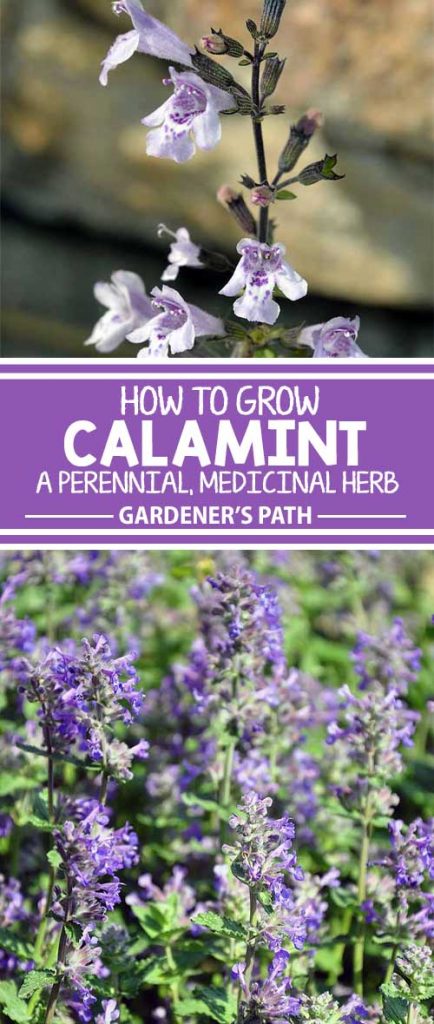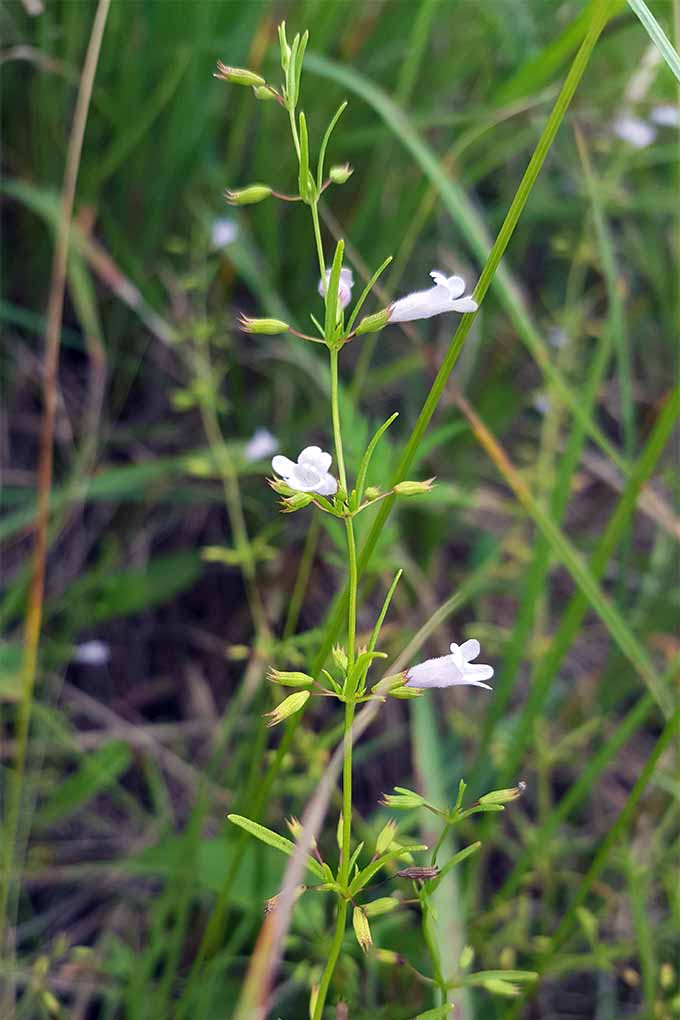A hardy, deer-resistant perennial that produces profuse and showy delicate blooms from early summer to autumn, calamint offers a number of varieties and cultivars that make a fine addition to gardens of all types. Characterized by a distinctive minty scent, this plant is native to many parts of the world, most notably the Mediterranean, with couple of varieties that are native to North America. Hardy in zones 5-9, Calamintha grows 12 to 24 inches tall, with about a 2-foot spread.
White, lilac, pink, red, or light blue flowers bloom from early summer into autumn. Some varieties, such as C. nepeta and C. sylvatica, are used medicinally, and we’ll talk more about that in a bit.
Decisions, Decisions
As is common in the plant world, plants are shuffled and reshuffled, and pinning down the exact taxonomy of a particular plant can be elusive.
We’ll describe some of the Calamintha varieties that do well in various parts of the United States.
C. coccinea
C. coccinea is a small shrub with wiry stems and red flowers. This highly drought-tolerant variety is also known as scarlet calamint, scarlet wild basil, red savory, red mint shrub, scarlet balm, southern calamint, and red basil. It is native to deep, sandy areas of the southeast Gulf Coast and Florida, and it is well-loved by the sulphur butterflies that are common to these areas. Scarlet balm is also popular with hummingbirds and bees.
C. nepeta
C. nepeta, which you might also see referred to botanically as C. nepetoides, is commonly known as lesser calamint or field balm. It’s native to southern Europe and Great Britain, but does well in many American gardens, also. It does so well, in fact, that it’s actually listed as a “weed” by Virginia Tech! Many others, however, find C. nepeta’s small, light blue to purple flowers a delightful border softener, especially in lime-heavy soil. C. nepeta is sometimes cultivated as a medicinal herb for household use as a treatment for gastrointestinal disorders, depression, insomnia, and painful menses.
C. sylvatica
C. sylvatica is also known botanically as C.baetica, C. officinalis, or C. ascendens and goes by a couple of everyday names, as well: common calamint and woodlands calamint. Marvelette White Calamint Seeds Blue Cloud Calamint Seeds This low-growing plant offers lavender flowers and leaves that can be used to make tea, with a flavor said to resemble a mix of mint and marjoram. Its purported medicinal properties are similar to those of C. nepata.
C. grandiflora
Its attractive, relatively large, pink flowers have earned this variety the nickname “large-flowered calamint.” The variegated version prefers some shade, while the solid-colored type does best in sun. Its scent has been described as a mixture of pineapple, catnip, thyme, and pennyroyal.
Pick a Soil, Any Soil
Where the sun isn’t brutal, this butterfly-attractor will generally take full sun. If you live in a blast furnace, however, situate the plant so that it gets a bit of afternoon shade. This tough shrub does well in sandy, loamy, rocky, or shallow well-drained soils. It thrives in acidic or neutral soils and will even grow in very alkaline soils.
As this plant is relatively unknown in the United States, sourcing seedlings might be tricky, and your best bet might be to purchase seeds or steal a cutting from a neighbor. You can also divide clumps to spread the beauty. Plant in early spring, and you’ll likely get blooms the first year!
Plant It and Forget It
Even though it’s part of the mint family, calamint doesn’t require the near-boggy conditions true mint needs. In fact, once established, this plant is quite drought-tolerant, though it won’t complain about slightly moist soil, either.
This hardy plant needs little to no fertilizer. If the soil is really horrid, you can apply a basic, balanced mix in early spring.
Few Pests
Some gardeners report seeing powdery mildew on Calamintha leaves near the end of the growing season. If the disease is severe, cut the plant back significantly for a fresh start the next season.
Worth the Search
If we had to pick a downside to this bushy charmer, it’s that not enough garden stores carry it! We just need to get the word out about this beauty so more stores will stock it, right? Tolerant of almost any soil, and offering almost constant summer blooms, delicious tea, and purported medical benefits, Calamintha surely deserves a spot in your landscape. For more minty inspiration, you might also like these guides:
How to Grow and Use Lemon Balm Grow Fassen’s Catmint for Durable Summer Color How to Grow Horehound
The staff at Gardener’s Path are not medical professionals and this article should not be construed as medical advice intended to assess, diagnose, prescribe, or promise cure. Gardener’s Path and Ask the Experts, LLC assume no liability for the use or misuse of the material presented above. Always consult with a medical professional before changing your diet or using plant-based remedies or supplements for health and wellness.






